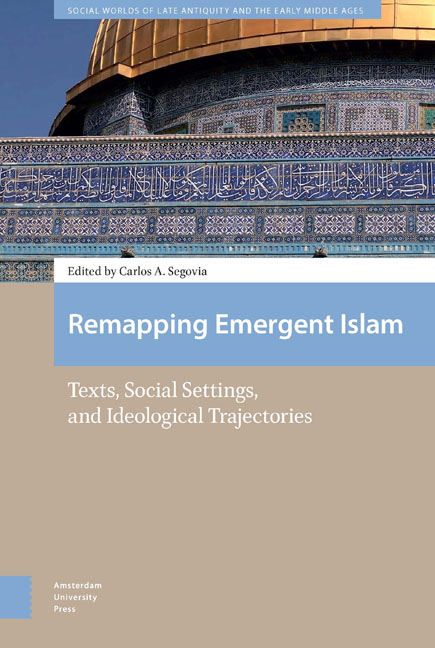Book contents
- Frontmatter
- Contents
- Introduction
- Part 1 Re-Assessing the Hypothesis of a Peripheral Jewish Background
- Part 2 An Encrypted Manichaean / Messalian Matrix?
- Part 3 Measuring the World’s Timeline… and Imagining the Afterlife at the Persian Court?
- Part 4 Conceptual Quicksand, Meta-Narratives of Identity, Texts and their Marginalia
5 - The Jewish and Christian Background of the Earliest Islamic Liturgical Calendar
Published online by Cambridge University Press: 24 November 2020
- Frontmatter
- Contents
- Introduction
- Part 1 Re-Assessing the Hypothesis of a Peripheral Jewish Background
- Part 2 An Encrypted Manichaean / Messalian Matrix?
- Part 3 Measuring the World’s Timeline… and Imagining the Afterlife at the Persian Court?
- Part 4 Conceptual Quicksand, Meta-Narratives of Identity, Texts and their Marginalia
Summary
Abstract
The present study is focused on the early Islamic liturgical calendar and, in particular, on its structural elements that are datable to the lifetime of Muhammad (d. c. 632 / 635), and especially the period preceding the radical change of the Islamic calendar from a lunisolar model to one purely lunar. Sporadic Christian influences in later times are beyond our scope.
Keywords: Late Antiquity, Early Islam, Liturgical Calendars, Qur’ān
The Non-Liturgical Calendrical Background
Although we can leave unresolved the difficult problem of intercalating, we do need to establish a rough correspondence between the twelve regular (non-intercalated) months and the months of the Julian calendar. According to the Muslim traditions related to the life of Muhammad (all of them being late, not earlier than the ninth century), 1 Muḥarrām ah 10 (ad 631 / 632) was 9 April. Julius Wellhausen has shown (from the etymology of month names, usage in pre-Islamic poetry, etc.) that the original place of Muḥarrām was not the spring but the autumn. However, following the Muslim traditions, Wellhausen still accepted that, in the early seventh century, Muḥarrām and the seventh month Raǧab (initially the counterpart of the Jewish Nisan) replaced each other, in the way that the autumnal beginning of the year was changed to the vernal.
These later traditions were not considered reliable by Christine Rink and Ralf Hansen, who reasonably presumed that the structure of the year remained unchanged from the sixth century to the 10 ah reform. Therefore, they proposed a reconstruction of the original lunisolar Muslim year, with the first month, Muḥarrām, roughly equated to October, and the seventh, Raǧab, to April of the Julian calendar. Evidently, Rink and Hansen were still working from the traditional equation of Muḥarrām with April, or, more exactly, a tacit presumption that the first month with the vernal beginning of the year must have been April. Such a presumption would have been natural for the regions where the Antiochian tradition to begin the year in October dominated. In this tradition, indeed, Nisan was identified with April. This was the norm for the whole of Syriac-speaking Christianity (even the month names in Syriac follow the respective pattern) and for a great part of the Muslim world, including such centres as Damascus and Baghdad.
- Type
- Chapter
- Information
- Remapping Emergent IslamTexts, Social Settings, and Ideological Trajectories, pp. 131 - 148Publisher: Amsterdam University PressPrint publication year: 2020

